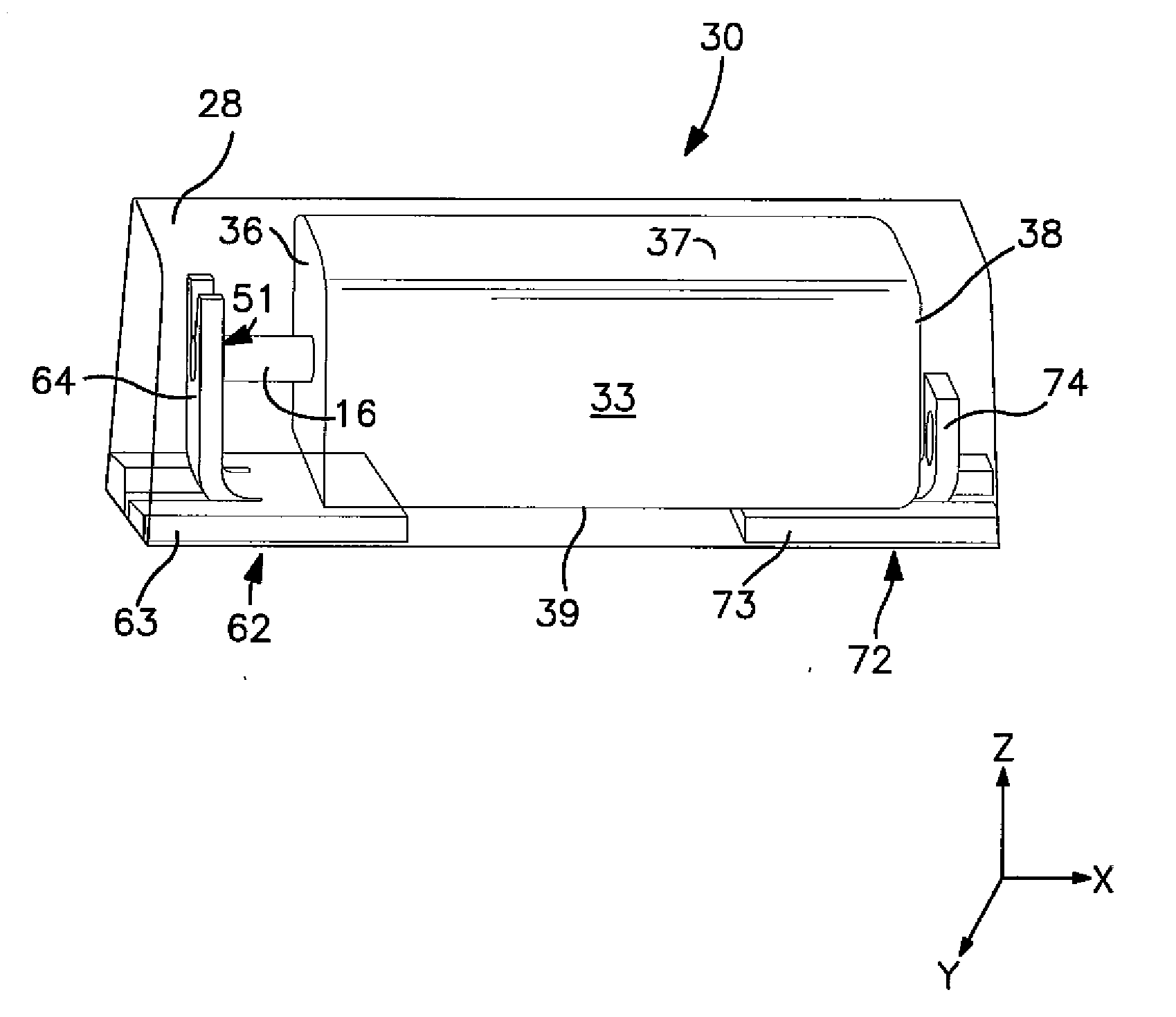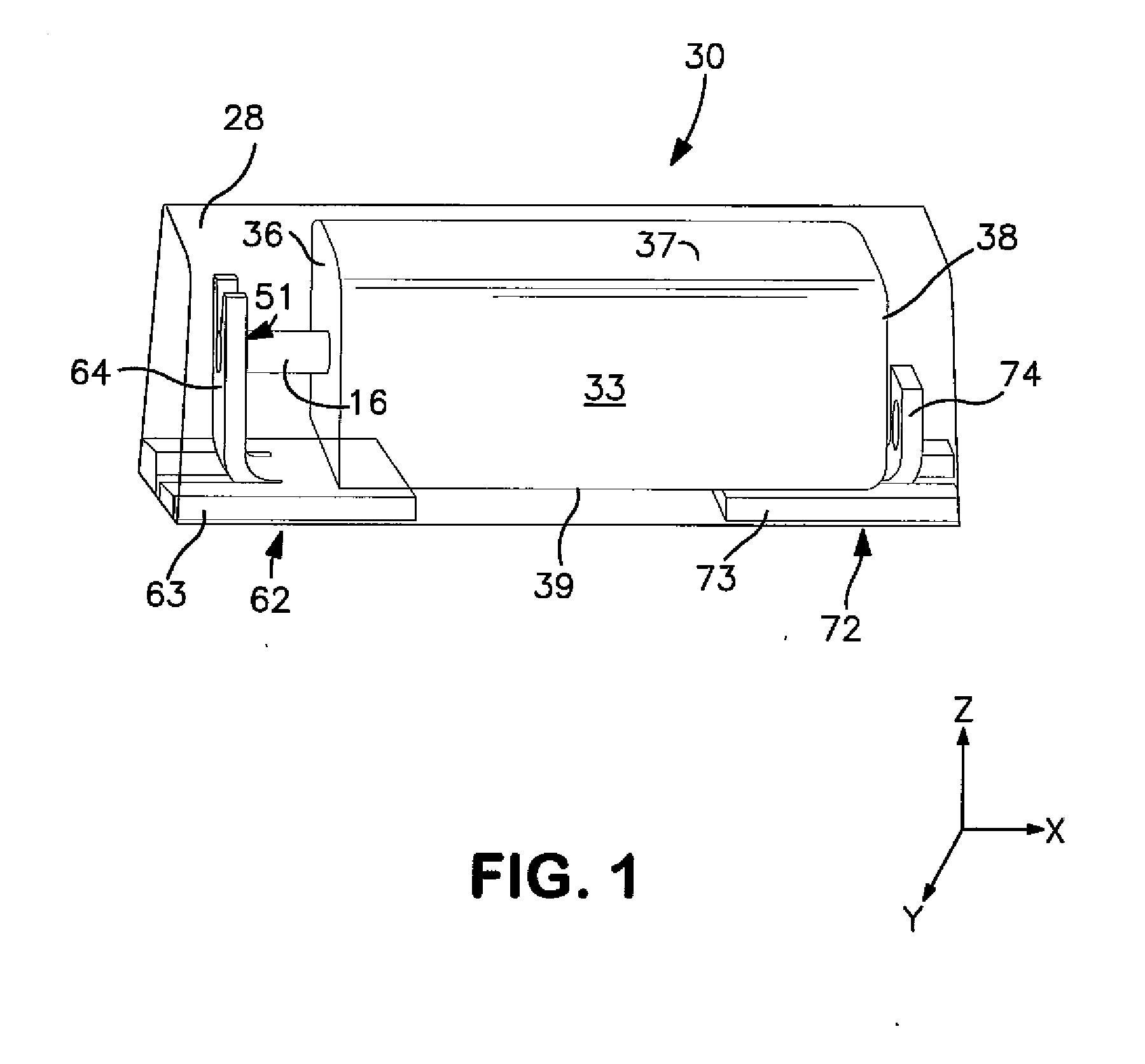Solid Electrolytic Capacitor with Enhanced Wet-to-Dry Capacitance
- Summary
- Abstract
- Description
- Claims
- Application Information
AI Technical Summary
Problems solved by technology
Method used
Image
Examples
example 1
[0078]70,000 μFV / g tantalum powder was used to form anode samples. Each anode sample was embedded with a tantalum wire, sintered at 1280° C., and pressed to a density of 6.8 g / cm3. The resulting pellets had a size of 1.80×1.20×2.40 mm. The pellets were anodized to 14.4V in water / phosphoric acid electrolyte with conductivity 8.6 mS at temperature of 85° C. to form the dielectric layer. A conductive polymer coating was then formed by dipping the anodes into a dispersed poly(3,4-ethylenedioxythiophene) having a solids content 1.1% and viscosity 20 mPa·s (Clevios™ K, H. C. Starck). Upon coating, the parts were dried at 125° C. for 20 minutes. This process was repeated 10 times. Thereafter, the parts were dipped into a dispersed poly(3,4-ethylenedioxythiophene) having a solids content 2% and viscosity 20 mPa·s (Clevios™ K, H. C. Starck). Upon coating, the parts were dried at 125° C. for 20 minutes. This process was not repeated. Thereafter, the parts were dipped into a dispersed poly(3,4...
example 2
[0079]70,000 pFV / g tantalum powder was used to form anode samples. Each anode sample was embedded with a tantalum wire, sintered at 1280° C., and pressed to a density of 6.8 g / cm3. The resulting pellets had a size of 1.80×1.20×2.40 mm. The pellets were anodized to 14.4V in water / phosphoric acid electrolyte with conductivity 8.6 mS at temperature of 85° C. to form the dielectric layer. The pellets were anodized again to 60V in water / boric acid / disodium tetraborate with conductivity 2.0 mS at temperature of 30° C. for 25 seconds to form a thicker oxide layer built up on the outside. A conductive polymer coating, graphite coating, silver coating was then formed in the same manner described in Example 1. Multiple parts (200) of 150 μF / 6.3V capacitors were made in this manner.
example 3
[0080]Capacitors were formed in the manner described in Example 2, except using a different conductive polymer coating. A conductive polymer coating was formed by dipping the anodes into a dispersed poly(3,4-ethylenedioxythiophene) having a solids content 1.1% and viscosity 20 mPa·s (Clevios™ K, H. C. Starck). Upon coating, the parts were dried at 125° C. for 20 minutes. This process was repeated 10 times. Thereafter, the parts were dipped into a dispersed poly(3,4-ethylenedioxythiophene) having a solids content 2% and viscosity 20 mPa·s (Clevios™ K, H. C. Starck) and additional 20% solids content of poly(ethylene glycol) with molecular weight 600 (Sigma AldrichR). Upon coating, the parts were dried at 125° C. for 20 minutes. This process was not repeated. Thereafter, the parts were dipped into a dispersed poly(3,4-ethylenedioxythiophene) having a solids content 2% and viscosity 160 mPa·s (Clevios™ K, H. C. Starck). Upon coating, the parts were dried at 125° C. for 20 minutes. This ...
PUM
| Property | Measurement | Unit |
|---|---|---|
| Fraction | aaaaa | aaaaa |
| Size | aaaaa | aaaaa |
| Electric potential / voltage | aaaaa | aaaaa |
Abstract
Description
Claims
Application Information
 Login to view more
Login to view more - R&D Engineer
- R&D Manager
- IP Professional
- Industry Leading Data Capabilities
- Powerful AI technology
- Patent DNA Extraction
Browse by: Latest US Patents, China's latest patents, Technical Efficacy Thesaurus, Application Domain, Technology Topic.
© 2024 PatSnap. All rights reserved.Legal|Privacy policy|Modern Slavery Act Transparency Statement|Sitemap



